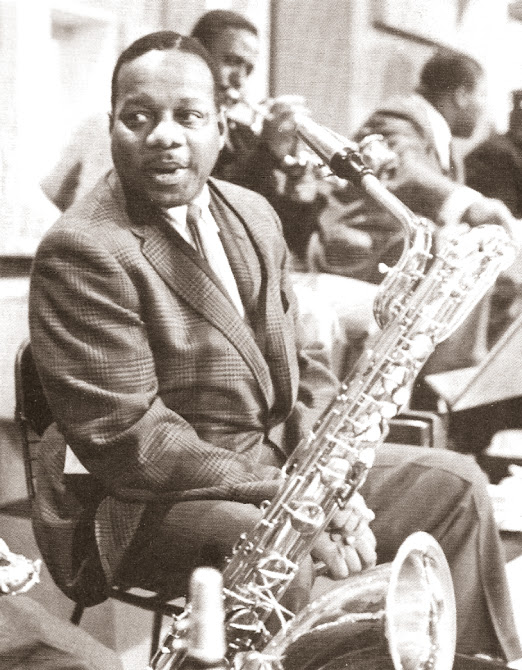Harry Carney’s baritone Saxophone was the anchor and the foundation of the distinctive tonal blend that dominated the Duke Ellington Orchestra for over 45 years. He was a mainstay of Ellington’s experience and he outlived Duke by just four months. Harry Howell Carney was a Boston native, born on April 1, 1910. He grew up in the same area as Charlie Holmes and Johnny Hodges, alto saxophonists. They gathered inspiration together from 78-rpm jazz records. Carney listed Clarence Williams and Clarney Bechet as his primary influences, along with Buster Bailey and Fletcher Henderson, Don Murray and Jean Goldkette, among others. He began playing clarinet in a band sponsored at 13 by the Knights of Pythias. After learning the alto sax and performing well, he traveled to New York with Holmes. He also gigged at The Bamboo Inn just before the building burned. Carney began to sit in with Duke Ellington and he took him back home for a series one-nighters. A lifelong partnership was formed when Carney and Duke sweet-talked Carney’s mother into allowing him to continue his involvement in the band. Ellington began to ride in Carney’s Imperial car while the saxophonist sat quietly at the wheel. Duke was able to create some of his most memorable melodies in this intimate and friendly environment. Carney composed “Rockin’ In Rhythm”, but he mainly stayed with the big baritone. There are many examples of his impressive presence on the horn, including “Frustration,” “Sono,” and “Perdido” (among others). A bonus track of “Sophisticated lady” from the CD reissue of the Verve album Soul Call, is a riveting testimonial to Carney’s lyrical profundity and ability as a balladeer, and his resilience as an adept practitioner of circular breathing. This was two of the many ways he influenced Rahsaan Rot Kirk, who in 1972 presented a double portrait of Harry Carney, Barney Bigard, and simultaneously played a clarinet, and a baritone, Carney claimed that he was the first to master the baritone to aid Duke in broadening the ensemble’s palette. He initially imitated Coleman Hawkins in his upper register and Adrian Rollini down below. He also began to play the bass clarinet in 1944. Harry Carney was a leader on the HRS, Wax and Columbia labels between 1946 and 1960. He also recorded as a sideman for various labels, including the Coleman Hawkins Sax Ensemble and Billy Taylor’s Big Eight. Al Hibbler and Nat King Cole, Billie Holiday, Frank Sinatra Rosemary Clooney Pleasant Joseph, Buddy Clark, Johnny Rae, and Nat King Cole were all his vocal accompaniments. Rex Stewart and Hayes Alvis were behind Carney’s 1937 vocal trio on “I’ve Got to Be a Rug Cutter.” Johnny Hodges led small groups in 1966 at the Berlin Sportpalast. Harry Carney was their backbone, providing a powerful backing for their rendition “Things Ain’t What They Used To Be.” As it were, his last testament is a performance of “Drop Me Off In Harlem” from Mercer Ellington’s album Continuum. It was recorded between the deaths on May 24, 1974, and October 8, 1974, of Harry Carney and Duke Ellington. Charles Mingus recorded a moving tribute to Carney by Sy Johnson in December 1974 and it was included on his album Changes Two. Allmusic
